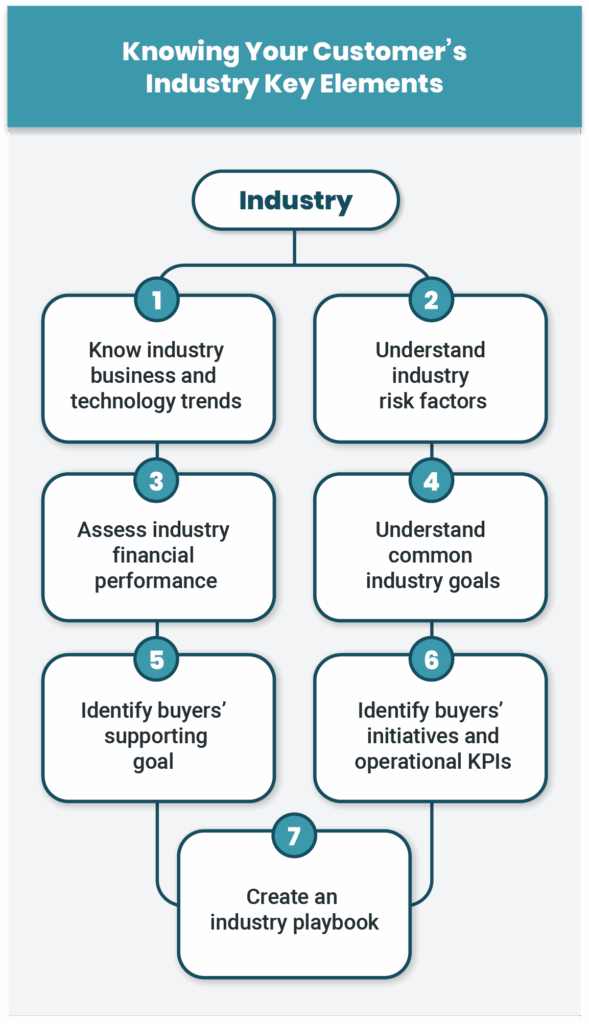Enterprise Selling with Industry Insights

If you’re selling to senior executives, you’ve probably heard this before: “Know my business.” And yet, research shows nearly 80% of execs feel sellers just don’t get it. The upside? Almost 90% say they would engage earlier in the buying process—if the seller brings something valuable to the table.
That’s exactly where FinListics’ Developing Client Insights comes in. Our goal is to help you better understand your client’s world so you can deliver meaningful insights—and be seen as a trusted partner, not just another vendor. It’s a win-win.
Knowing a client’s industry is foundational to developing client insights. This is what Bill Cortner, former Director,Procter & Gamble and VP, J.M. Smucker Company, has to say.
“Larger companies struggle with innovation, so they value outside sources that bring them new ideas. A vendor who invests time to learn about a company’s industry—its current risks, trends, and needs—and who knows the customer well enough to leverage their industry knowledge and bring innovation to them has something of real value to offer that customer.”
Why Knowing Your Client’s Industry Matters
Here’s what happens when you truly understand the industry your client operates in:
- You Build Credibility and Trust. When you speak their language and reference what’s actually going on in their world, clients feel heard—and are more likely to open up.
- Your Conversations Get Real, Fast. Forget cookie-cutter pitches. Tailoring your message to their specific industry challenges makes your value clear, faster.
- You Spot Opportunities Others Miss. Industry know-how helps you identify risks, goals, and KPIs that even the client may not have considered.
- You Share Fresh Ideas. Executives don’t want recycled sales decks. When you bring insights from others in their industry, you become a source of innovation.
- You Unlock New Stakeholders (and Budgets). Knowing how strategies ripple through a business helps you reach influencers in marketing, operations, and more—not just your typical contacts.
The 7-Step Framework: Know Your Client’s Industry
We use a proven 7-step process to help you build a clear, insightful view of your client’s industry.

Tip: This works best when you involve teammates from sales, marketing, customer success, and your industry experts. Yes, it takes effort—but it pays off. The result? A powerful industry playbook you can use to engage clients and develop tailored marketing materials.
Step 1: Start with Business & Tech Trends
What’s shaping the industry today? From market shifts to emerging technologies, understand the big-picture trends—and how your solution helps clients adapt or stay ahead.
Step 2: Understand Industry Risks
Every industry has its pain points. Look at operational, customer-related, and economic risks to see which ones are most relevant to your client.
Step 3: Assess Financial Performance
The industry a company plays in has a huge impact on its results. Dive into performance trends and compare your client to the industry average to uncover gaps and opportunities.
Step 4: Learn the Common Goals & Strategies
What are businesses in this industry trying to achieve? Knowing common strategies gives you a lens into what your client—and their competitors—might be focused on.
Step 5: Identify Key Buyers and Their Goals
Now zoom in. Who within the organization is driving those goals forward? This helps you understand your existing contacts better—and find new ones.
Step 6: Know Their Initiatives & KPIs
Once you know who the key buyers are, look at what initiatives they’re driving and how they measure success. These insights help you connect your solution to real business outcomes.
Step 7: Build Your Industry Playbook
Pull everything together into a playbook. This is your go-to resource for crafting relevant messaging, sharing insights, and showing how your solution drives impact. If your org has a knowledge manager, they can help maintain and evolve the playbook over time.
The Bottom Line
Understanding your client’s industry isn’t just helpful—it’s essential. This framework gives you a clear path to becoming a more strategic, insightful seller. And in another Developing Client Insights article, we’ll walk through real-world examples of each step to bring this approach to life.
Leave a Reply